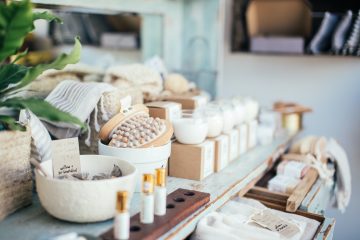Happy World Environment Day!
It wasn’t long ago that I posted a similar, but more intense article for the Earth Day.
Today I’m taking the opportunity to talk about it again, this time focusing on plastic.
Today, June 5th, is the World Environment Day and this year’s theme is “Beat The Plastic”. People all over the world celebrate this day in an attempt to battle the single-use plastic production that is so harmful for the environment, and I invite you to take a stand with me against the plastic.
Why Beat the Plastic?
As I have already mentioned in my big Earth Day post, plastic pollution has reached a status of global crisis. But today’s statistic taken from the UN Environment and World Environment Day are even more gruesome:
- Up to 5 trillion plastic bags are used by the world’s population each year
- At least 13 million tonnes of plastic ends up in the oceans each year, killing over 100 million marine mammals a year.
- 1 million plastic bottles are bought each minute, and they are a single-use plastic. Americans recycle only about 13% of the bottles.
- Plastic takes up to 1000 years to decompose, and in the last decade we produced more plastic than in the entire last century.
- Over 400 million tonnes of plastic are produced each year.
- 50% of all plastic is single-use plastic.
How did we get to this point and where do we go from here? All the plastic we have produced will be sticking around for centuries to come. Not a single piece of plastic we created has decomposed yet. And we keep producing more.
Plastic and Your Health
Plastic is a well-known hormone disruptor. It can contain Bisphenol A (BPA) and many other compounds that negatively affect your health. Even though BPA-free reusable plastic containers and bottles are now available, not many people look for the BPA sign and many more gladly reuse their store-bought water bottles that are intended for a single use only. Reusing those bottles raises your risks of ingesting the toxic compounds that may be leaching into your water when the bottle gets damaged (scratched or squished so that the tiny cracks appear).
The excess use of plastic may lead to many health problems, such as hormone imbalances, weight gain and infertility. It makes sense to reduce the amount of plastic that we use, especially around food. But sometimes we just don’t know what we are getting. For example, plastic can be found in your tea bags! The microbeads in your facial and body scrubs and toothpastes are plastic. Your beauty products can contain plastic and you just don’t know. And finally, heating your food in plastic containers has been found to be harmful and leaching toxins into your food.
But this is not the end of it.
Plastics and The Animals
The plastic we throw out often ends up in the oceans. The microbeads that go down the drain when you wash off your scrub get ingested by fish and other marine animals. The same goes for microfibre – the cloths so handy for cleaning your home get stripped of their tiny strings of plastic little by little every time you wash them and this plastic also goes down the drain.
Finally, all those plastic-contaminated animals, mainly fish, ends up on your table, on your plate, unless you’re a vegetarian.
The extent of this problem is so big that there is really no end to the story. Except that the plastic may become our end if we don’t end it first.

How to Reduce the Use of Plastic
Ideally, this should start with the governments making strict policies on the use and production of plastic. But in our world it doesn’t work quite well as of now.
Luckily, there are more and more alternatives to plastic becoming available nearly every day. More shops and companies commit to eliminating plastic waste altogether, and more people are becoming aware of the problem. There are a lot of options now, a lot of easy steps for you to take to reduce your own use and waste of plastic, especially the single-use plastic.
This post contains affiliate links. For more information, please read my full disclosure.
1. Reusable shopping bag
I can swear by them. We have plenty of reusable shopping bags of different sizes that we have been using for years. If I happen to forget to take my reusable bag to the shop, I’d rather carry all the stuff in my arms or make another trip than by a plastic bag. I haven’t honestly bought one in years and whenever I’m offered one, I refuse.
You can get a reusable bag in any of the grocery stores or if you prefer something more fashionable, there is a wide choice of handmade bags on Etsy. I personally prefer the organic cotton bags like this one – they look so simple yet there’s something stylish about them.
2. Reusable grocery bags
Even if you do use a reusable shopping bag it is so hard to stop the supermarkets from pushing plastic into your home. Many of the groceries come pre-packaged in plastic, and if they give you the option to buy loose they place a roll of plastic bags nearby. Even the paper bags for bread and pastries have a clear plastic strip for the pastries to be visible at the till. Isn’t it crazy?
While I have no problem buying fruit and veg loose without putting them in a plastic bag, you can’t really place freshly baked bread on their dirty, germ-laden conveyor belt at the check-out. This is where the plastic-free grocery bags come in handy. They are see-through and the cashier can easily see what’s in them. And you can wash them in the washing machine and reuse again.
3. Reusable water bottle
Another thing I swear by.
I have to tell you this: I love sparkling water. I would choose it anytime over the still water. But because both come in plastic bottles I stopped using them. I would rather choose a soda in a can in that case. But I do have a reusable bottle and just fill it up and carry around with me. This S’well water bottle will save you loads of money that you would have otherwise spent on single-use bottles, not to mention the waste. I also love these Bobble bottles, they are great because they feature a carbon filter that allows you to drink the water from the tap anywhere you are. But while the bottles are recyclable, I’m not so sure about the filters.
4. Reusable coffee mug
If you regularly get a take out coffee when out and about, it makes sense to invest in a reusable mug. It greatly reduces the waste and might as well save you some money in the long run. Some coffee shops, like my favourite Insomnia, now offer a discount if you bring your own mug. This Sept Miracle travel mug is made of insulated stainless steel to keep your drink nice and hot longer, and it is extremely good looking.
5. Reusable lunch box
Plastic food boxes and zip-lock bags are another big contributor to plastic waste. Just imagine how many of those boxes bags are used every single day by people who buy their lunch or pack sandwiches for work or school. Invest in a good reusable lunch box and take your food from home. It’s not only going to be better for the environment, but will ensure a better diet for you and your family. Alternatively, you could reuse glass jars for packing salads.
6. Reusable straws and cutlery
Another thing to consider is the plastic straws and plastic single-use cutlery. It is so easy to say no and stop using them altogether. You can get a light set of reusable cutlery made of bamboo like this one instead.
7. Beeswax wrap
Over the last decade we have made it a big habit of wrapping everything in layers and layers of cling film. And what is cling film? Correct, it’s plastic.
Beeswax wrap is the new alternative to plastic wraps to keep your food fresh. You can use it for pretty much anything – breads, sandwiches, cheese blocks, fruit. It is amazing how much we can do without plastic!
8. Bamboo toothbrush
Traditional toothbrushes are plastic. What’s even worse, they may contain BPA which we try to avoid. Bamboo toothbrushes are a wonderful alternative that is natural, sustainable, BPA and plastic-free and greatly reduces waste as you are supposed to change a toothbrush every 3 months or so.
9. Use glass jars and containers
Instead of the regular tupperware choose the glass containers. I buy mine in Ikea. Using glass jars and containers also reduce or eliminate the use of zip-lock bags and other plastic containers, which is amazing.
10. Every little counts
There are many other ways to go plastic-free. Not all of them may be available in your area, but it never hurts to do anything you can to make a change. If you are not yet mentally prepared to take on the life without plastic, then take it slow and do it step by step. But honestly, You can make a difference! And if each of us picked just one thing that we could do today, the world would be a cleaner place!
Let’s make the world a better place together!
Let’s Beat The Plastic!
Lana x
If you're a blogger and especially if you're an eco-blogger, please check out my post on how to get a 100% Eco-friendly blog.



3 Comments
Emily · June 6, 2018 at 12:02 PM
This was a great post! I’m really trying to reduce my plastic use and have switched over to reusable grocery bags and glass straws and containers! Thanks for sharing this!
JLyn · June 6, 2018 at 2:08 PM
I’ve gradually been working to reduce how many disposable products we use. We have gone almost entirely paperless in our house, and I have been looking for other ways to reduce waste. This list is a great place to start!
chelsea Watkins · June 6, 2018 at 2:38 PM
Love this! Thanks for all of the great info!